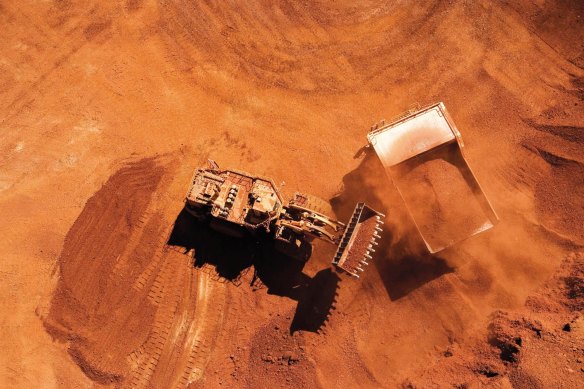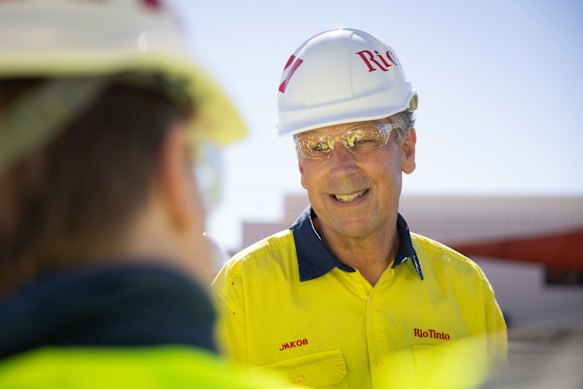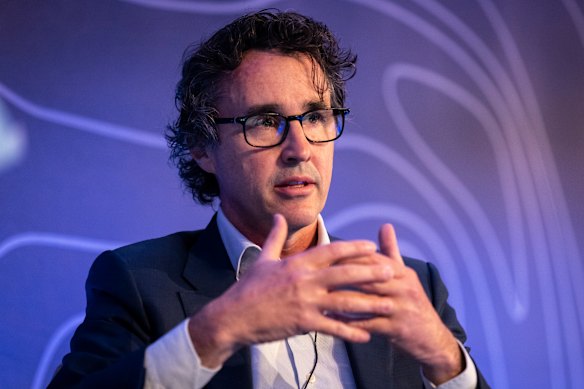By Nick Toscano
Rio Tinto, the largest Australian iron ore miner, has said it is tackling major economic challenges, from Donald Trump’s trade wars to a slowdown in Chinese demand for steel, as it delivered its smallest first-half profit in five years.
The mining giant, which earns most of its money digging up iron ore in Western Australia and selling it to China to be processed into steel, on Wednesday reported a 16 per cent drop in underlying profit to $US4.8 billion ($7.4 billion) in the six months to June 30 as prices for the lucrative commodity slumped and its mines in the Pilbara were hit by four cyclones.

China’s production of steel – much of it made from Australian iron ore – has been slowing.
The company’s Canadian smelters are the biggest suppliers of foreign aluminium to the United States, making it one of the companies to be hit the hardest by the Trump administration’s 25 per cent tariffs imposed on the metal, which were then increased to 50 per cent in June.
Rio Tinto told investors it had incurred $US321 million in gross costs during the half-year linked to the US tariffs.
“It’s an incredibly uncertain world,” Rio Tinto chief executive Jakob Stausholm said. “Geopolitical tensions and the unpredictability of the development of tariffs are difficult.”
Trump’s tariffs were adding to an already difficult economic environment across the globe, including in China, Rio Tinto added.
For years, booming demand from Chinese steel mills, which process iron ore in steel-making furnaces to churn out molten pig iron, has delivered mega-profits for miners including Rio Tinto and BHP, and cemented iron ore’s position as Australia’s most lucrative export.
But China has been facing an oversupply crisis roiling its property sector and subduing demand for steel, and driving sharp downturns in the iron ore price earlier this year.
In its latest official forecasts, the federal government predicts iron ore earnings are set to fall by $20 billion – from $116 billion to $96 billion – within two years.
Stausholm – who steps down next month to be replaced by Rio Tinto’s iron ore boss Simon Trott – described the miner’s half-year results as resilient, pointing to stronger core earnings and cashflow. While iron ore mines remained the “jewel in the crown”, Stausholm said, he noted the company was becoming less dependent on the iron ore price.

Outgoing chief executive Jakob Stausholm at the opening of the Baowu Western Range mine in the Pilbara last month.Credit: Matt Jelonek/Rio Tinto
“We have a much more profitable aluminium and copper business,” he said.
Under Stausholm’s leadership, Rio Tinto has been pushing harder to diversify from iron ore and into other commodities that stand to benefit from growing global efforts to tackle global warming, such as electric battery raw material lithium, and copper, a key ingredient in electric wiring.
While Rio Tinto’s dividend and underlying earnings missed consensus expectations, analysts at RBC Capital Markets said sentiment on the result would be positive.

Rio Tinto’s next chief executive, Simon Trott, will try to simplify the miner’s structure.Credit: Tony McDonough
“Rio Tinto produced a good set of operational results across key divisions,” analysts Kaan Peker and Ben Davis said.
Rio Tinto shareholders would receive a dividend of $US1.48 a share, down from $US1.77 a share at the same time last year, the company said on Wednesday.
Trott, a 25-year veteran at the miner, will take the helm as chief executive on August 25.
It has been almost a decade since Rio Tinto had an Australia-born boss after former chief executive Sam Walsh stepped down in 2016.
Trott has run Rio Tinto’s critical iron ore operations in the Pilbara since 2021 and spent much of his career working at the company in senior roles including stints in Singapore, London and Hong Kong.
The executive grew up in Wickepin, a small town of fewer than 400 people in Western Australia’s wheat belt. He has risen swiftly to the top of Rio Tinto, becoming chief executive aged 50.
Trott will be paid a base salary of $2,747,590, along with further incentives and a company pension worth 14 per cent of his earnings.
The Business Briefing newsletter delivers major stories, exclusive coverage and expert opinion. Sign up to get it every weekday morning.